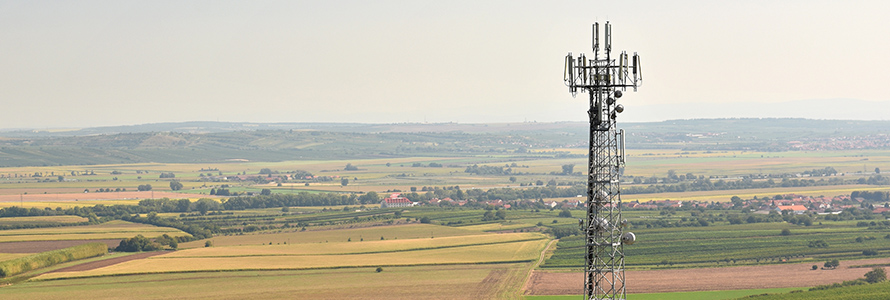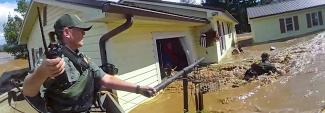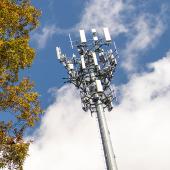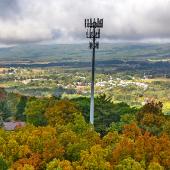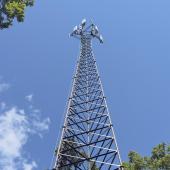This blog is a repost from ICMA’s PM Magazine, originally published in on November 1, 2021.
For the first time, public safety has a nationwide broadband network it can call its own. Known as FirstNet, the network is built through a public-private partnership between the federal government and the global telecommunications carrier AT&T. Overseen by the First Responder Network Authority (FirstNet Authority), a federal government entity, this nationwide broadband network is revolutionizing the delivery of public safety services.
This unique public-private partnership leverages the federal government’s ability to engage public safety across the country and builds on the important relationships established in the public safety community in advocating for the creation of a single, nationwide network. The same associations that came together in an effort to better serve public safety now make up the FirstNet Authority’s Public Safety Advisory Committee (PSAC), which provides guidance and recommendations to FirstNet Authority on the network.
The FirstNet Authority’s mission is rooted in serving public safety’s broadband communications needs and desires. The market engagement team is responsible for working with public safety across the country—in rural and non-rural areas alike—to seek input on current and potential future network use, services, features, and capabilities.2 The FirstNet Authority uses that information to continually enhance and improve the network. Most recently, public safety feedback drove the FirstNet Authority to invest in the FirstNet fleet of deployable network assets, increasing the number of available deployable assets for use, which is especially helpful for coverage in rural areas. Today, the FirstNet fleet of deployables now consists of more than 100 assets available to FirstNet subscribers by request.
FirstNet continues to offer innovative solutions to public safety such as the FirstNet Flying COWs (cell on wings) and FirstNet One—an aerostat (or blimp) for use in the aftermath of major disasters. This is another example of the benefits of the FirstNet Authority/AT&T public-private partnership in delivering value for public safety.
A Network Designed for Public Safety
As part of the enabling legislation, Congress provided $6.5 billion of funding and 20 MHz of prime spectrum for the FirstNet network. This spectrum has been combined with 100 MHz of AT&T’s own licensed spectrum to provide a vast network capable of meeting the needs of public safety users on a daily basis.
With FirstNet, responders across the country are able to receive priority access to broadband communications services during emergencies and day-to-day work, ensuring reliability for their vital communications. In addition to daily operations, such as streaming camera video from police vehicles or allowing firefighters to access building floor plans, FirstNet has been used during a variety of emergency and pre-planned events, including for response in rural areas, such as the Cameron Peak Fire in Colorado and tribal nations’ response during the pandemic.
The growth of the network has been astounding. According to AT&T, there are over 2.5 million connections to the FirstNet network from 17,000 agencies across the country in all 50 states, five territories, and the District of Columbia. The partnership is just four years old, but already AT&T has deployed over 90 percent of public safety’s spectrum across the country. FirstNet is meeting this goal at a faster pace than had been anticipated, since first becoming operational in March 2018.
Rural Expansion
Providing priority access to first responders is a tremendous benefit, but there is also a secondary benefit to FirstNet that is emerging—FirstNet is a significant driver in expanding broadband coverage in rural areas for both public safety and the general public.
This can be traced back to FirstNet’s founding legislation, which included significant rural coverage requirements. Congress wanted to ensure that first responders even in remote regions of our country have access to this life-saving network and technology. Coverage in rural areas has significantly increased via our public-private partnership with AT&T, which allows their commercial customers to access Band 14 when it’s not being used by public safety.
As a result of FirstNet’s expansion into rural areas, the public now has access to commercial broadband in certain areas that previously had little or no broadband coverage. The nature of the FirstNet network is to connect first responders to one another, and with this expansion, responders are also even better connected to the communities they serve. Because the AT&T buildout brings new towers to areas in which first responders live and work, these communities are seeing more connectivity. More than ever before, connectivity and data usage have increased, and while people live and work at home, there is a focus on bridging the digital divide.
Telehealth Opportunities
The FirstNet network is providing increased opportunities for telehealth through expanded broadband coverage. Especially in rural areas where telehealth can be leveraged to connect advanced life support (ALS) and basic life support (BLS) field providers with doctors or experts at a hospital due to long transport times, patients are benefitting from virtual face-to-face contact, advice, and care during emergencies and when seconds count the most.
Earlier this year, the FirstNet Authority’s PSAC convened a strike team to address the use of telehealth over the FirstNet network. The emergency medical services (EMS) associations noted a significant uptick in the use of and need for telehealth during the COVID-19 pandemic. Other
PSAC members shared insights into how this new technology was improving patient care. Gathering this kind of feedback from current responders and network users from across the country is what enables the PSAC to help the FirstNet Authority to continually improve the network’s performance and utility.
Final Thoughts
As we celebrate the increased communications abilities that FirstNet provides to our nation’s first responders, we should not overlook the importance of the network’s benefits to rural communities in particular. Not only does the FirstNet network offer a secure and resilient interoperable broadband communications platform to public safety operating in rural areas (and non-rural areas alike) to help keep those communities safe, it has also enabled the expansion of broadband coverage to rural areas that have been traditionally underserved or unserved.
MARK L. RYCKMAN, ICMA-CM, is city manager and director of public safety of Corning, New York. He is ICMA’s representative to FirstNet’s Congressionally mandated Public Safety Advisory Committee (PSAC).


